The Best Dynamic Warm-Up Stretches For Runners

(Photo: Hannah DeWitt)
For as different as we all are, most runners these days have one thing in common: We lead busy lives. It can be a win to just get out the door and get your miles in. As such, we often roll right out of bed, lace up our shoes, and hit the road or squeeze in a quick run on the treadmill while the baby sleeps or during a brief lunch break at work.
No matter what specific scenario speaks to your life, all these routines have one thing in common—the tendency to forego a warm up and any stretching before heading into the run. However, properly warming up and performing dynamic stretches can actually help you have a better run. In fact, taking just 5-10 minutes to move through a couple of dynamic stretches for runners can increase range of motion, reduce stiffness, and allow you to have a nice fluid, open, efficient running stride as soon as you get started.
While it’s understandable to want to make your workout time as efficient as possible and skip the warm up, below, we explore the benefits of dynamic stretches for runners, how to easily and efficiently incorporate them into your precious workout window, and the best dynamic stretches for runners.
What is Dynamic Stretching?
When many runners think of “stretching,” they picture someone reaching down to touch their toes to stretch their hamstrings, or some other iteration of a classic static stretch.
However, knowledge of stretching has evolved quite a bit since the days of holding basic static stretches in PE class, and dynamic stretching is now a distinct stretching modality.
RELATED: 5 Common Mistakes When Doing Banded Glute Workouts
Static stretching involves holding a position towards the end range of motion where you feel a stretch. Stretches are usually held for 15-30 seconds, though some people stretch for longer. Static stretches tend to be most useful after a workout as part of a cool-down routine.
Dynamic stretching is a more functional form of stretching. It involves continuous movement patterns that extend the range of motion around a joint to stretch the muscles. For example, someone preparing to run may do hip circles or exaggerated lunges to stretch the hamstrings and glutes before running. Dynamic stretching increases blood flow to the tissues and helps warm up muscles prior to running.
Benefits of Dynamic Stretches for Runners
Again, while most runners are inclined to maximize their run time by squeezing in an extra mile or so instead of going through a warm up or doing dynamic stretches before running, this ultimately can be counterproductive, as doing so robs your body of the numerous benefits of stretching. Dynamic stretching can provide the following benefits:
Dynamic stretching increases range of motion.
Range of motion refers to how much mobility or movement you have in a joint. In general, the more range of motion you have, the more limber and flexible you’ll feel. Tight muscles and connective tissues prevent joints from moving at their end ranges of motion, which causes feelings of stiffness. For example, if your glutes and hip flexors are tight, the range of motion around your hip will be limited and your walking and running stride will be shorter and less efficient.
Research suggests that dynamic stretching performed prior to exercise increases hamstring range of motion and flexibility and decreases passive stiffness. Moreover, the reductions in muscle stiffness from dynamic stretching were maintained for 90 minutes or so, demonstrating a lasting impact of pre-workout dynamic stretching on muscle mechanics.
Dynamic stretching increases circulation to your muscles and activates sensory receptors (such as muscle spindles and Golgi tendon organs (GTOs)) in muscles, tendons, and ligaments. These receptors then send a signal to the spinal cord. The parasympathetic nervous system responds by sending a signal back to the tissues to relax. As muscle fibers and tendons relax, the tissues lengthen, pulling less forcefully on joints and allowing more “give” or motion about the joint.
Dynamic stretching elevates your heart rate.
Dynamic stretches involve constant movement, so they start to increase your heart rate and prepare you to run. It’s important to allow your heart rate to raise gradually in a warm up, rather than jumping suddenly into an intense workout.
Dynamic stretching activates your muscles.
Dynamic stretching has been shown to help activate muscles, which is helpful prior to a workout and it prepares your muscles to absorb the impact forces of running as well as work together to provide a powerful push-off phase of your running stride.
Dynamic stretching reduces the risk of injury.
Mobility work, such as dynamic stretching, increases circulation and helps warm up your muscles before a workout. It prepares muscles and connective tissues for hard work and increases range of motion in joints, reducing the risk of injuries from sudden movements and high forces.
Dynamic stretching can improve performance.
Who doesn’t want to run faster? Some research suggests that dynamic stretching prior to a workout can actually improve performance.
How to Incorporate Dynamic Stretching into Your Running Routine
We aren’t suggesting you overhaul your running routine and dedicate half of it to dynamic stretching. Instead, you can do 2-5 minutes of brisk walking or easy jogging and then perform a handful of dynamic stretches for 30 seconds each. Pick 5-6 dynamic stretches that target different muscles. Do one or two rounds of each exercise and then head out the door!
RELATED: Is Your Body Trying to Tell You You’re Overtraining? Here are the Signs and Symptoms
Here are some of the best dynamic stretches for runners:
Leg swings
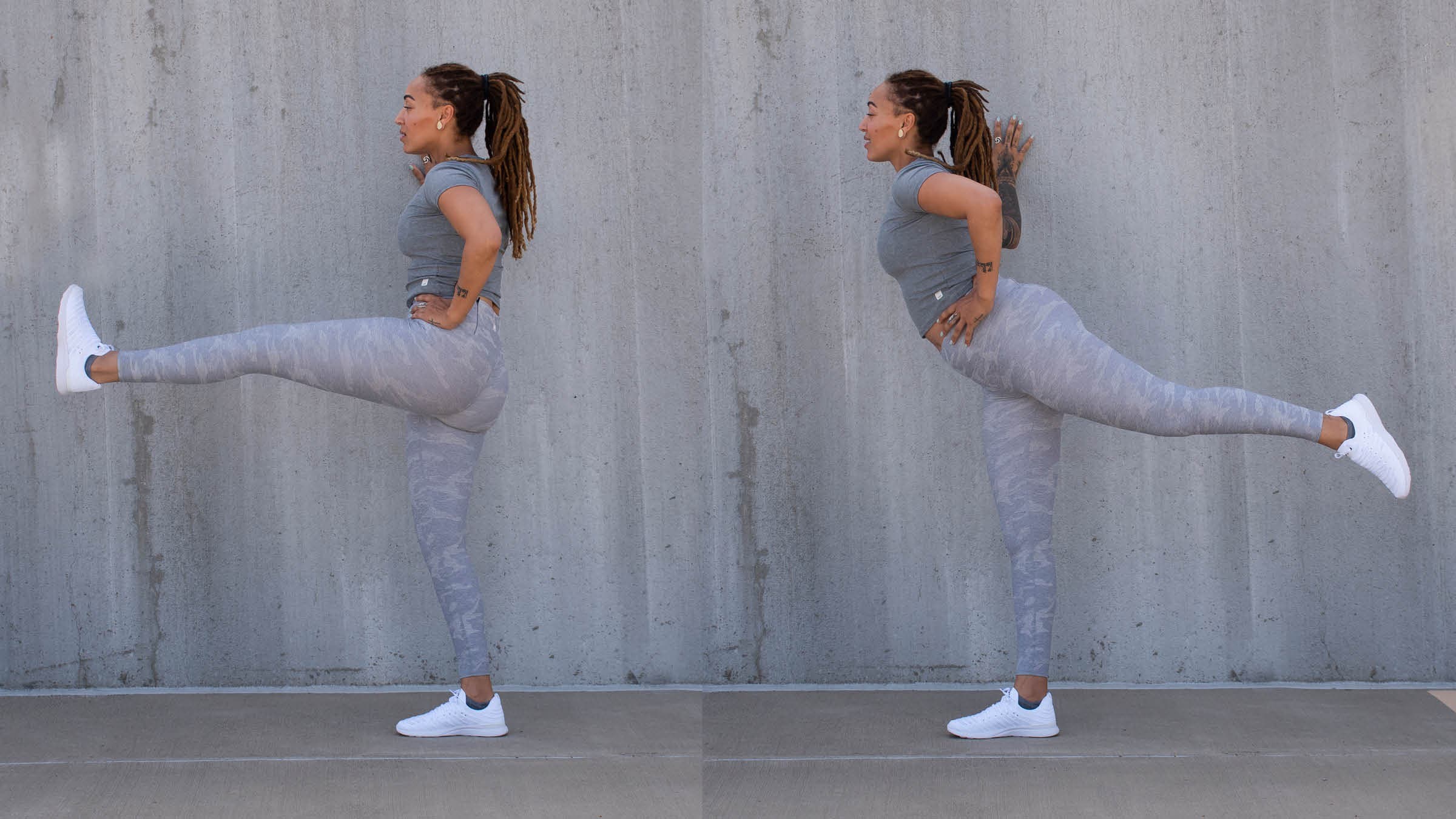
This is one of the most classic dynamic stretches for runners, and if you watch any track meet or televised road race, there’s a good chance you’ll see most, if not all, of the elite runners doing some version of leg swings before the gun goes off.
How to do them:
- Stand upright holding a wall, chair, or pole to one side of your body.
- Lift the leg on the opposite side of the body and swing it up in front of you and back behind you, back and forth, in a fluid motion like a pendulum swing.
- Keep your core engaged.
- Perform 15 leg swings and then switch sides.
Walking lunges
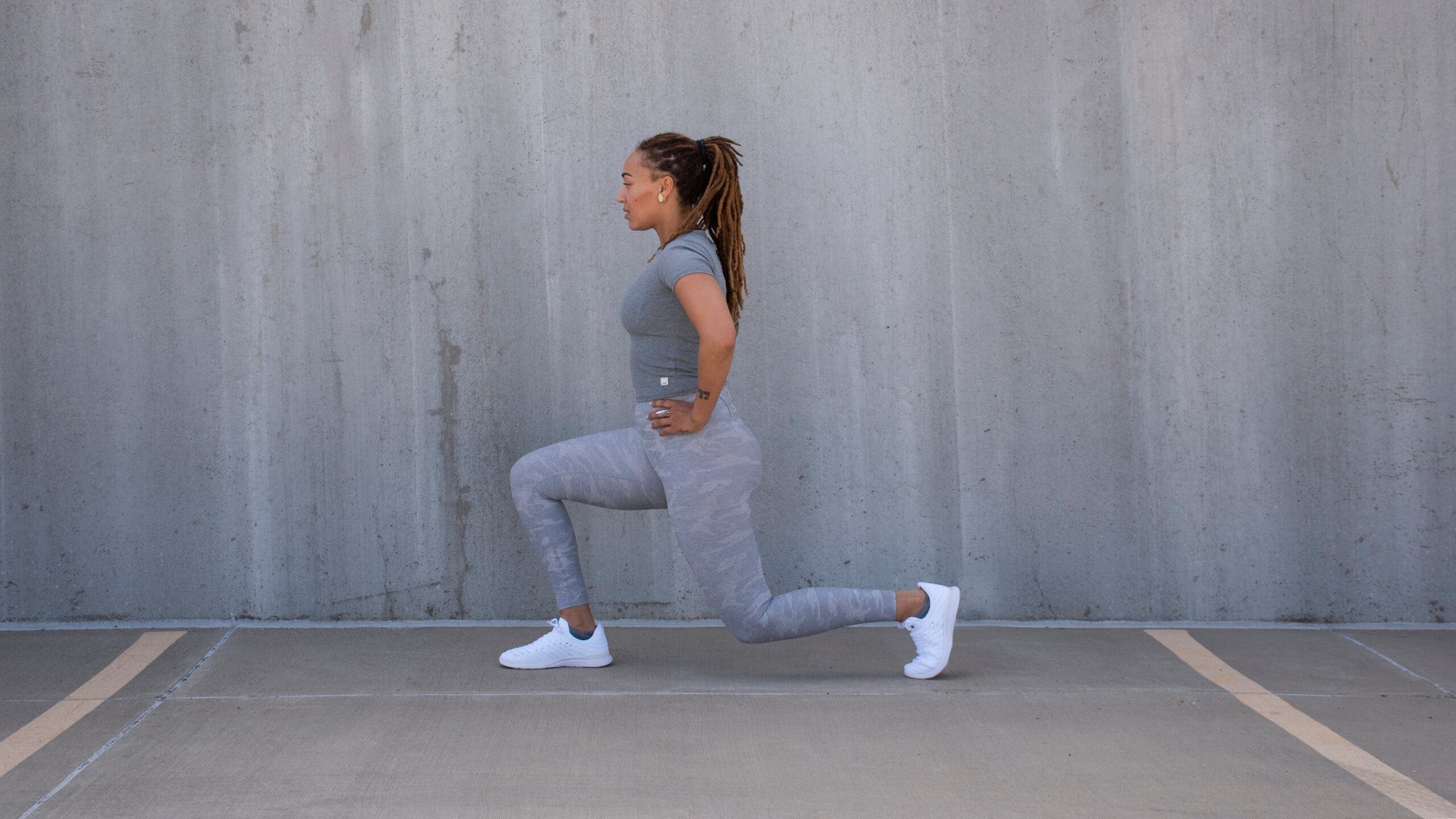
This is a great stretch for runners because it activates the glutes, quads, hamstrings, hips, and core. Be sure to keep your core engaged with an upright torso.
How to do them:
- Stand upright with your hands on your hips, chest up, and core engaged.
- Take a large step forward, and bend both knees to 90 degrees, dropping your body down into a deep lunge. Your back knee should nearly touch the ground and your front shin should be perpendicular to the floor.
- Alternate legs as you lunge and walk forward, completing 15 walking lunges per side.
Marching hurdles
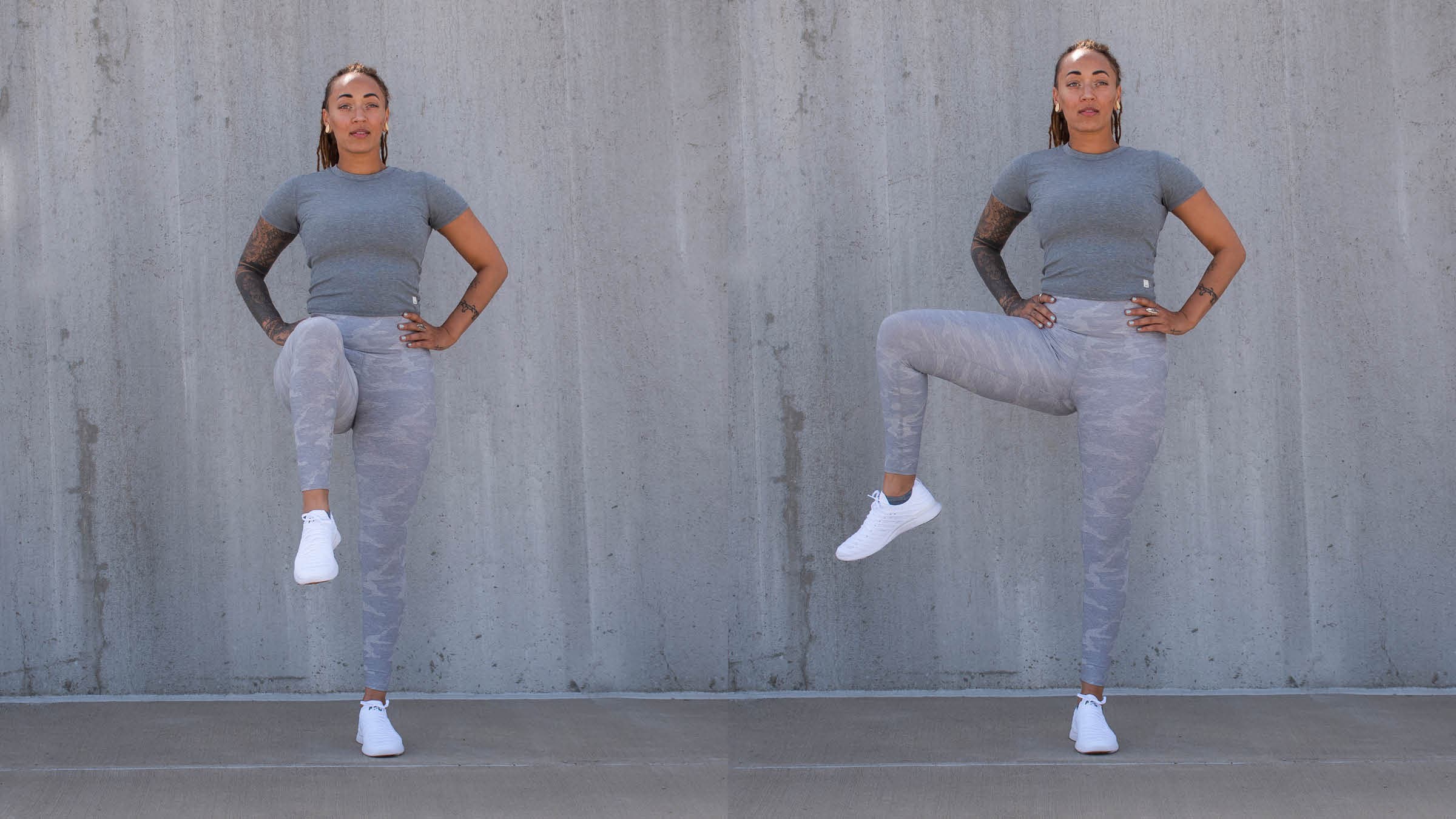
This is a good dynamic stretch for runners with tight hips. It also activates the core because you have to balance on one leg.
How to do them:
- Stand upright and lift one knee up towards your chest as if about to step over a tall hurdle. Lift as high as you can.
- When your knee is at chest level, turn your hip out, so that the inside of your leg is facing the imaginary hurdle.
- Draw it out to the side as you bring it back down, opening up your hips.
- Do 15 reps per side.
Bird dog
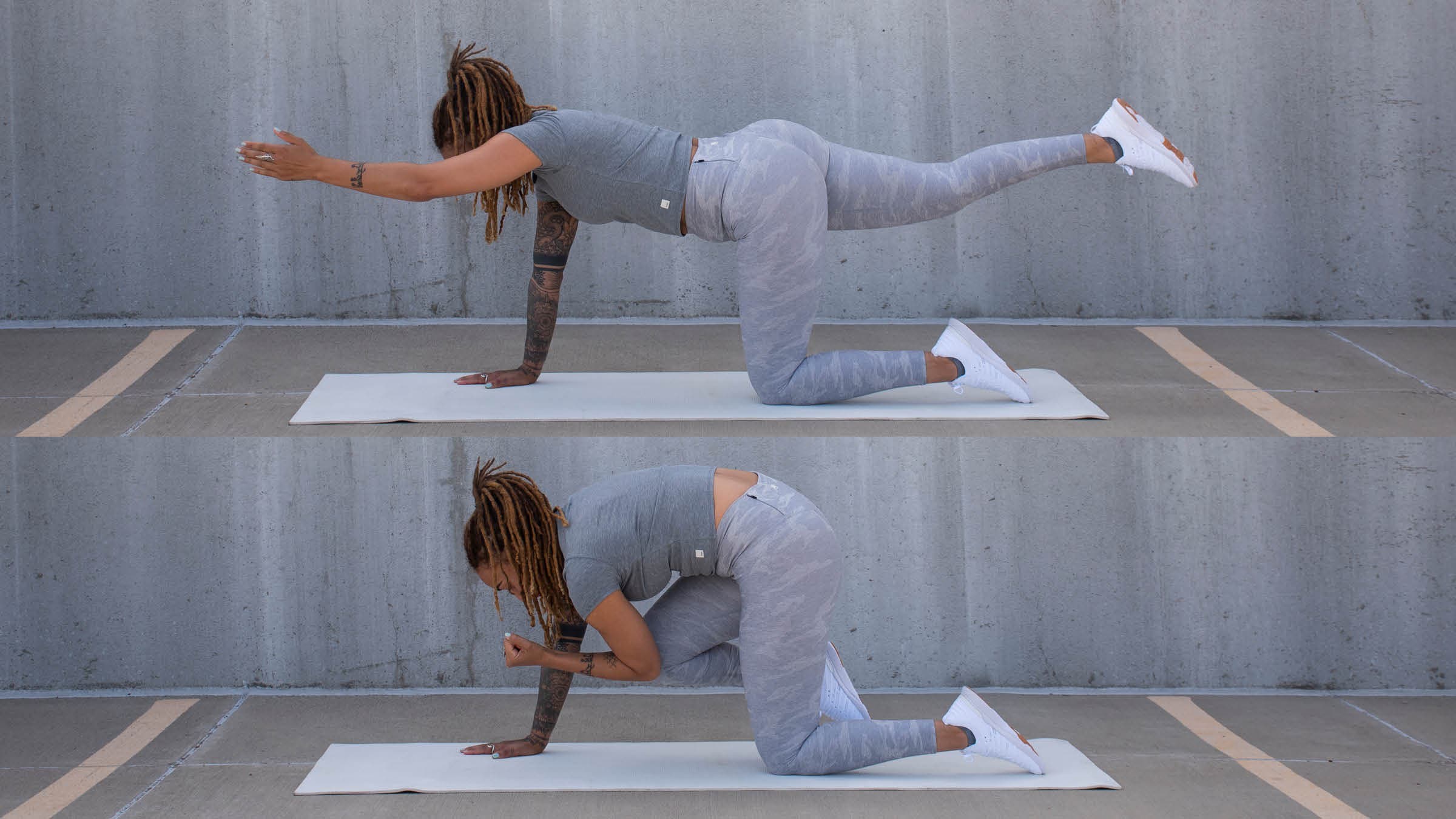
Bird dog activates your posterior chain and is a helpful dynamic stretch for runners who have difficulty activating their glutes and core while running.
How to do it:
- Get in a tabletop position by kneeling on all fours with a flat back and wrists under your shoulders.
- Simultaneously lift and extend your opposite arm and leg, maintaining balance. Reach your arm forward so that it’s straight and parallel to the floor and lift your leg straight back so that it’s also parallel to the floor.
- Bring them back to the starting position but before you drop them back down to rest, move past the neutral starting position to touch the elbow and knee together in a crunch underneath your chest.
- Repeat on the opposite side.
- Continue alternating sides, until you’ve completed a total of 30 reps, moving as slow and controlled as possible.
Heel and toe walks
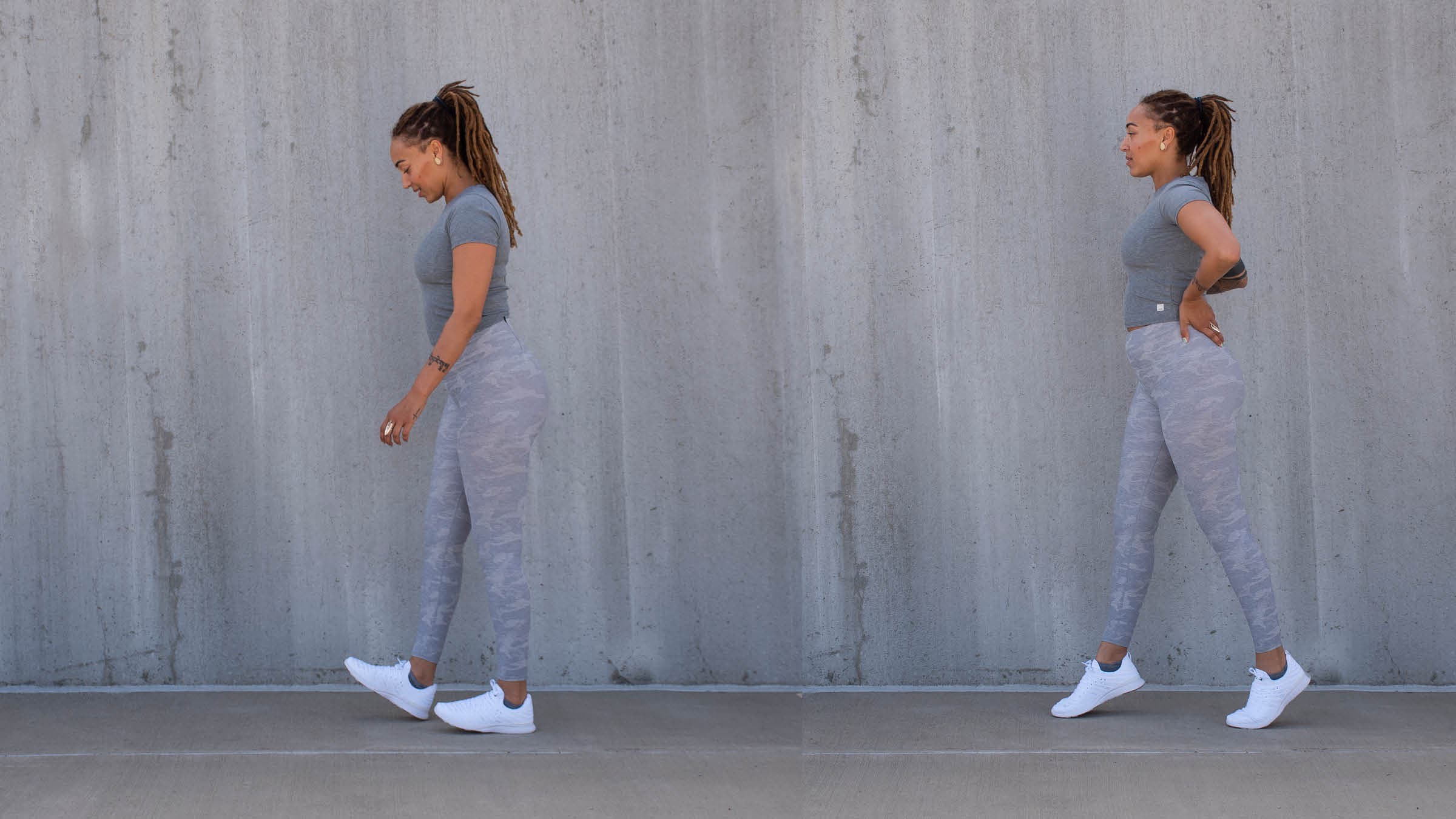
This dynamic stretch activates your shins, calves, ankles, and feet.
How to do them:
- Walk on tip toe for 30-50 meters.
- Then walk on your heels to return.
- Repeat one more time.
Lateral lunges with overhead stretch
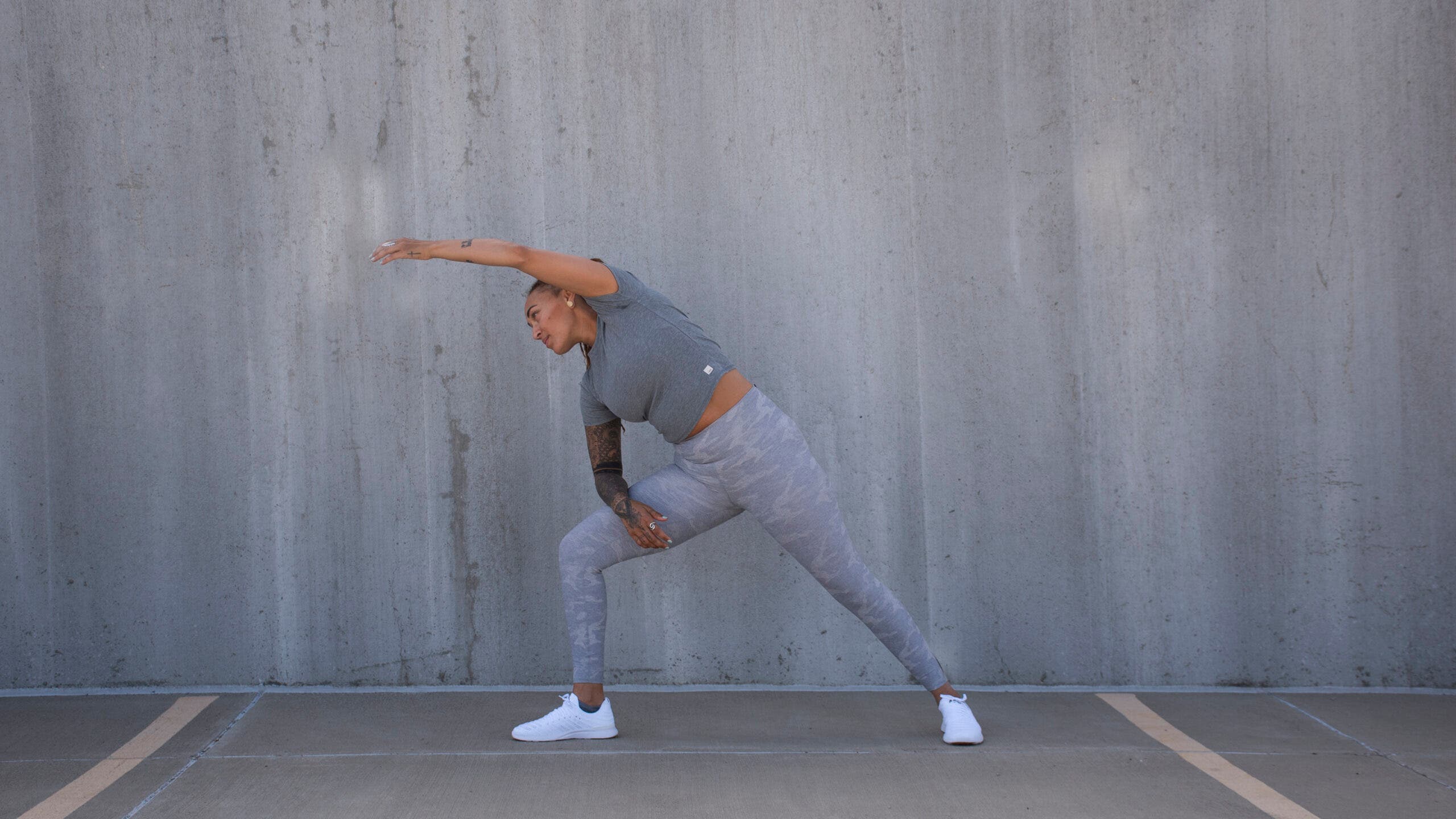
One of the best total-body dynamic stretches for runners is this compound movement. It will engage your quads, glutes, hips, core, shoulders, adductors, and abductors.
How to do them:
- Stand upright and take a giant step out to the right, bending and leaning into your right knee.
- Simultaneously reach your left arm up and over, stretching your obliques as you bend your entire torso to the right.
- Move fluidly from side to side, alternating arms and legs with each rep.
- Do 15 reps per side.
RELATED: How to Train Your Breath for Better Performance
RELATED: Want to get stronger in the next 90 days? Check out the annual Oxygen 8 Challenge from our sister publication Oxygen Mag for a three month strength training and nutrition plan.